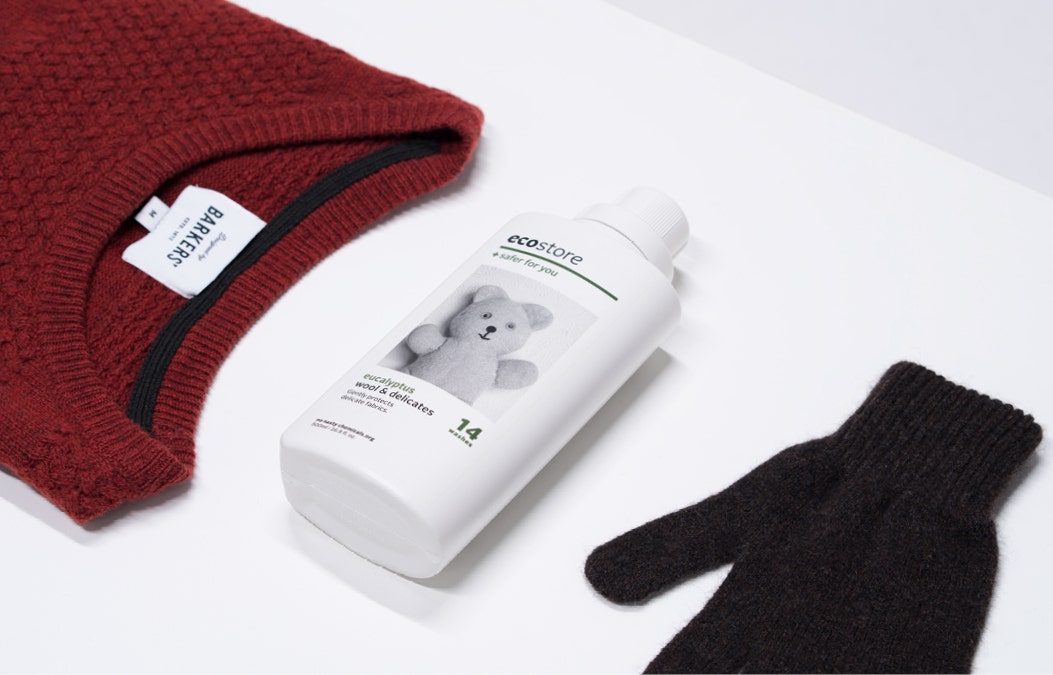One of our favourite natural textiles, high-quality wool is warm, breathable and soft to the touch. We mainly use it for knitwear and suiting. Due to the more delicate nature of its fibre and the construction of knitted items, woollens require particular care be taken when washing and drying. Make sure you’re especially gentle with garments made from merino and cashmere wool. Woollen suits should always be dry-cleaned.
We recommend hand-washing all woollen jumpers. Always use cold or warm water; hot water can cause them to shrink - a disaster that anyone who’s ever pulled a suddenly child-sized jumper out of their machine will recognise. Use gentle laundry liquid, or one specially designed for wool, like ecostore wool wash. Avoid vigorous scrubbing or wringing.
While using a washing machine is possible, this does put stress on a garment as a jumper and risks pulls. A mesh laundry bag can be used to minimise this. Make sure you set your machine to a “wool” or “hand-wash” cycle.

Always dry your knitwear flat - lay it on a towel out of direct sunlight. Hanging a wet jumper on a clothesline can cause it to stretch, and dryers can cause shrinkage and stretching. Woven woollen items like trousers can, however, be hung to dry.
Particularly fine knits may require an iron after washing and drying - do so on a cool “wool” setting. Steaming also works well. Knitwear should always be folded rather than hung to prevent stretching.
Ensure your woollen garments are clean before you put them away, as this helps prevent moths from attacking your jumpers. Sachets of lavender tucked in your drawer or hanging in your closet are a good natural deterrent.
Some woollens are made from a blend of textiles - such as lambswool, merino and some synthetics. Wool blends tend to pill more, so we recommend investing in a Sweater Stone and regularly de-pilling your garments.

